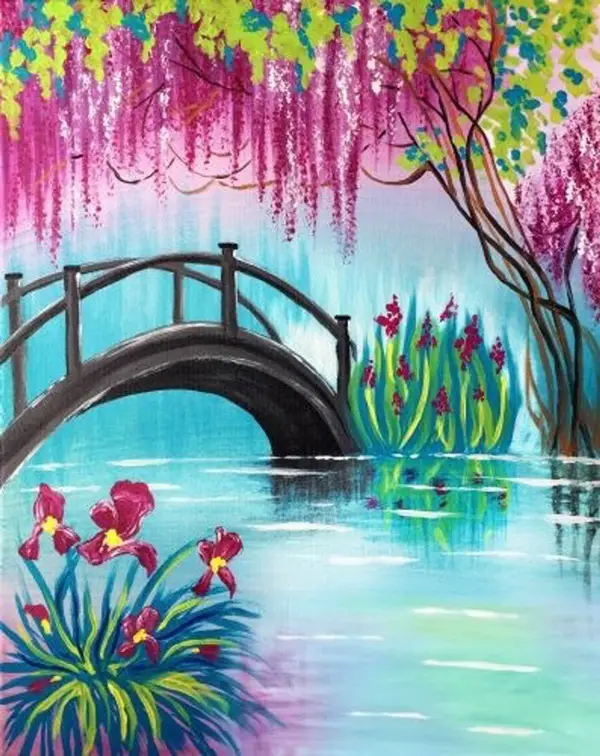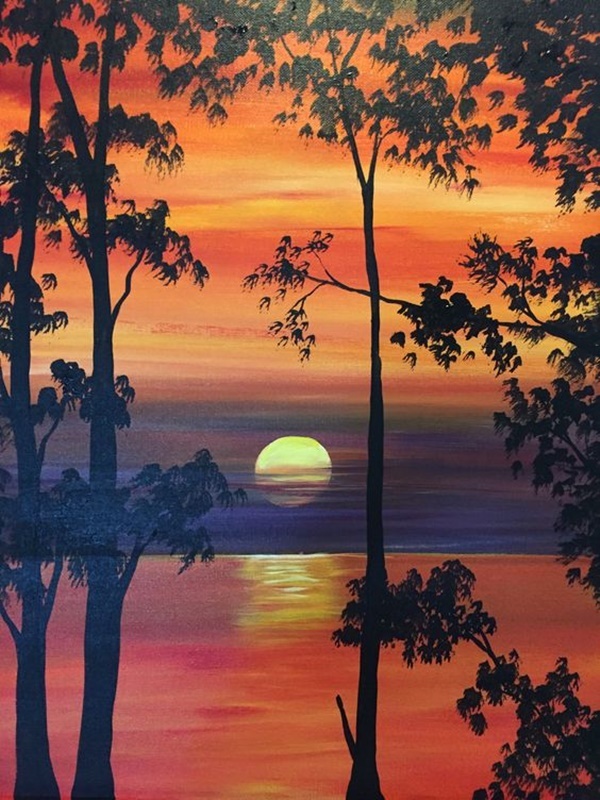

If your lines or strokes in a background mountain accidentally go over a foreground tree, that’s ok. The advantage of this is that you don’t need to be very neat in the background or middle ground. This means painting all the elements in the background, then middle ground, then foreground. Step 3) Paint your landscape background to foregroundįrom this point on there are many strategies, but we suggest painting from background to foreground. We’re simply trying to fill up the canvas with a layer of colours.Relax your body and stand as far back as you feel comfortable.Then roughly apply this colours onto the canvas.Dilute them with a fair amount of water so that the paint has a milk-like consistency.Mix just a couple of colours that you feel are important in the painting (5 colours at most).Use the largest brush you feel comfortable using.The easiest thing is to start with for both styles of painting is a wash. Once you are happy with the drawing, we can have some fun with acrylic paint! Step 2) Paint wash the background colours of your landscape Sketch out each section as based on the photo.

This helps to separate your art task into smaller ‘bite-size’ chunks. Use an HB pencil and press very lightly on the canvas. Draw the sections across the picture and do the same for your canvas. Print off a reference photo of the landscape of your choice, measure the picture into thirds as seen below. Use this drawing tip to make your painting super easy!
Simple scenery paintings acrylic pro#
Drawing a landscape pro tip for beginners Once you are happy with your drawing, draw it again on canvas. Sketch the scene five so times with 5 minute drawings. Step 1) Draw the landscapeįor representational painting, drawing practice prior to painting is helpful! Whereas abstract art uses concepts like shapes, forms, colours and other ideas to represent aspects of reality but not portray them realistically. trees look like trees, houses look like a house. Representational art means that things in the scene are recognisable as what you intend them to be. That normally has the best outcomes.Īlso you have two different styles to choose from when painting a landscape out of “ representational” or “ abstract“. Try and think what inspires you and excites you to paint. the beach, your home, a street, a field, the nights sky. Acrylic paint, pencils, oil paint or watercolour. canvas or paper.Ĭhoose what medium you want to use.
Simple scenery paintings acrylic how to#
How to start a beginner landscape paintingĬhoose what to paint on first, e.g. More detail does not simply make a painting “better”, but does mean more work. But for most of us we need to start by choosing which elements to include / exclude and in how much detail. There’s nothing wrong with including everything, if you had unlimited time and patience. Which elements are you going to include? Landscapes usually contain an infinite amount of detail.Particles in the air mean that the mountains and sky appear further away have far less contrast. Look at the example below Pierre-Auguste Renoir below. This is because of the atmosphere between our eye and the further objects. Things further away look greyer (less saturated), and less contrasted.

This is especially true in outdoor landscapes.

This is due to the drying time and opacity (whether you can see through the paint or not). The process for landscape painting is going to be different whether you are painting with watercolour, acrylic or oil paints. Your computer/phone would be the foreground.Īnything in-between would be the middle-ground. The wall or trees in the distance could be the background. The scene can include people… but they usually are not the main focus.įor example, look where you are right now.


 0 kommentar(er)
0 kommentar(er)
